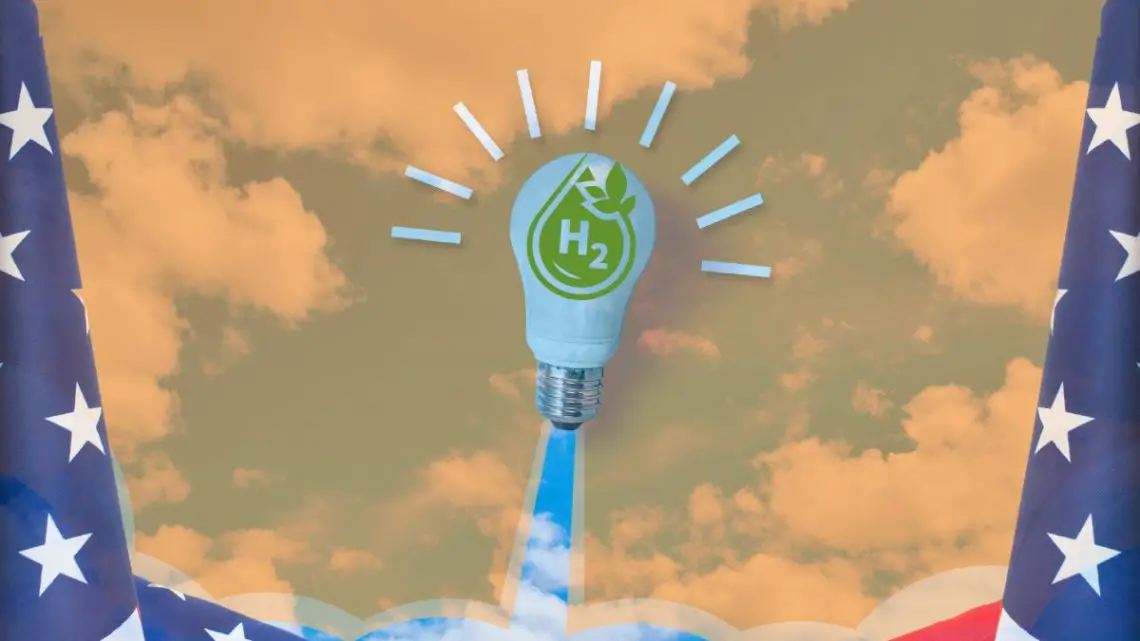
New interagency hydrogen task force launched by Biden-Harris Administration
August 24, 2023The goal is to build a clean hydrogen economy.
The Biden-Harris Administration has launched an interagency hydrogen task force under which federal agencies will coordinate hydrogen-related efforts across various areas, including improved outreach with tribal communities and other communities historically underserved.
The task force is designed to advance the administration’s “whole of government” clean H2 approach.
The Biden-Harris Administration has thrown a lot of support behind clean hydrogen, which is expected to play a vital role in the U.S.’ transition to a decarbonized energy system. And will be especially helpful to industrial, chemical processes, heavy transportation and other high-polluting sectors that are difficult to decarbonize.
The hydrogen task force, which was announced during a recent webinar by White House deputy national climate advisor, Mary Frances Repko, will be co-chaired by Repko and deputy secretary of the U.S. Department of Energy (DOE), David Turk.
According to Repko the task force will make sure that the administration fully leverages “the strengths and capabilities of the U.S. government to develop technologies, implement policy, and overcome barriers to building the clean hydrogen economy.”
Under the hydrogen task force multiple hydrogen-related efforts will be made.
Repko explained that the new task force will bring together federal agencies that will coordinate hydrogen-related efforts across many areas. Beyond enhancing outreach with tribal communities and other communities that have been historically underserved, it will work with a range of stakeholders from industry, labor unions, and academia.

Credit: Photo by depositphotos.com
“The vast opportunities of the clean hydrogen economy extend beyond a few programs – it touches a wide segment of our society and cuts across many of the administration’s priorities,” Repko said.
The U.S. currently produces 10 MMT of H2 annually.
 However, most of the approximately 10 million metric tons (MMT) of hydrogen that is produced comes from fossil fuels.
However, most of the approximately 10 million metric tons (MMT) of hydrogen that is produced comes from fossil fuels.
As part of its clean H2 efforts, the Biden-Harris Administration unveiled a national clean hydrogen strategy and roadmap back in June. This strategy includes opportunities to domestically generate 10 MMT of clean H2 every year by the end of the 2020s, followed by 20 MMT a year by 2040 and 50 MMT a year by 2050.
To give a sense of scale of how much energy 10 MMT of clean hydrogen is, Turk explained that it is “equivalent to the amount of energy used by every bus and every train in the United States combined.”
The new hydrogen task force and the administration’s other clean hydrogen investments, including building regional hydrogen hubs, combined with the DOE’s research and development work on hydrogen delivery, storage and applications in various sectors, among other goals, are helping to bolster the U.S.’ plans to decarbonize with clean hydrogen.
Ready to test your knowledge on the most abundant element in the universe? Take our fun and engaging Hydrogen Quiz now! [forminator_quiz id=”58712″]



 With over 15 years of reporting hydrogen news, we are your premier source for the latest updates and insights in hydrogen and renewable energy.
With over 15 years of reporting hydrogen news, we are your premier source for the latest updates and insights in hydrogen and renewable energy.
If this is the case, why all of the participating governments in the G20 providing a significant funding for fossilized fuel?
Exciting times ahead for the hydrogen market! As we witness a global push towards sustainable energy solutions, hydrogen’s potential as a clean and versatile fuel source is truly remarkable. The recent growth trends, as highlighted in the MarketsandMarkets report, are a testament to the increasing recognition of hydrogen’s role in decarbonizing sectors like transportation, industry, and even power generation.
It is taking too long to change the infrastructure. Hydrogen Hubs working with large renewable energy utility installations that can be connected strategically to H2 Fuel Cell Micro Grids, Hydrogen Storage and Hydrogen Fueling Stations offers the quickest path forward worldwide to complete a transformation to a hydrogen economy. The transportation industries must convert to the use hydrogen and/or batteries. Power plant operators must capture fossil fuel emissions. Oil and gas well drillers and operators must capture methane and any other harmful climate warming gas. Hopefully, governments around the world see the wisdom of doing so quickly. Comments ten years ago in emails predicted the growing risk of massive fires in Canada.